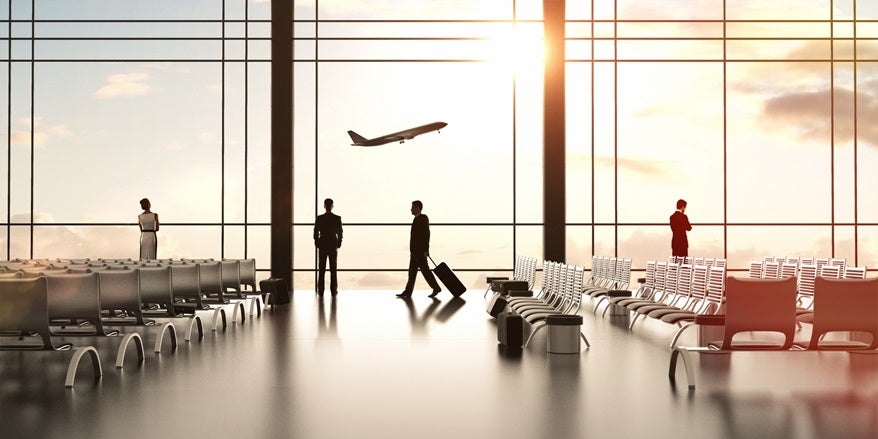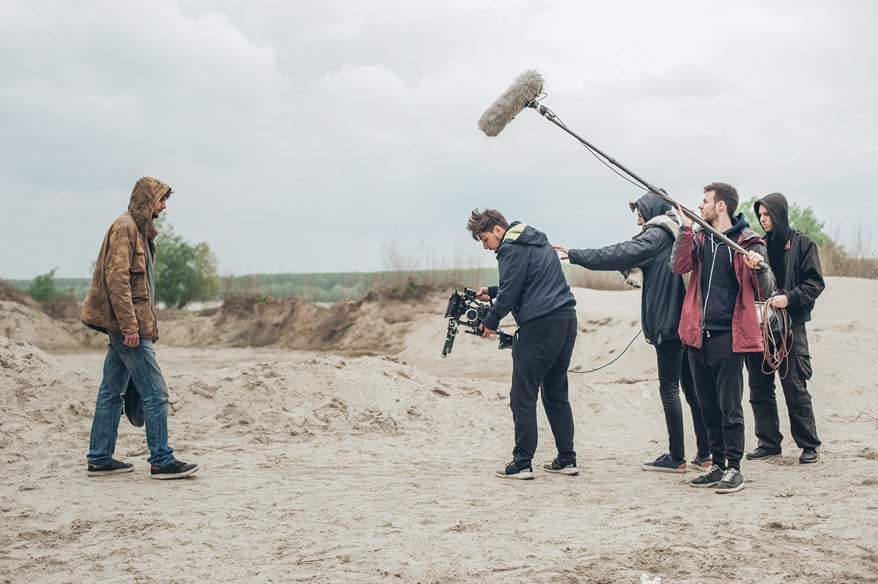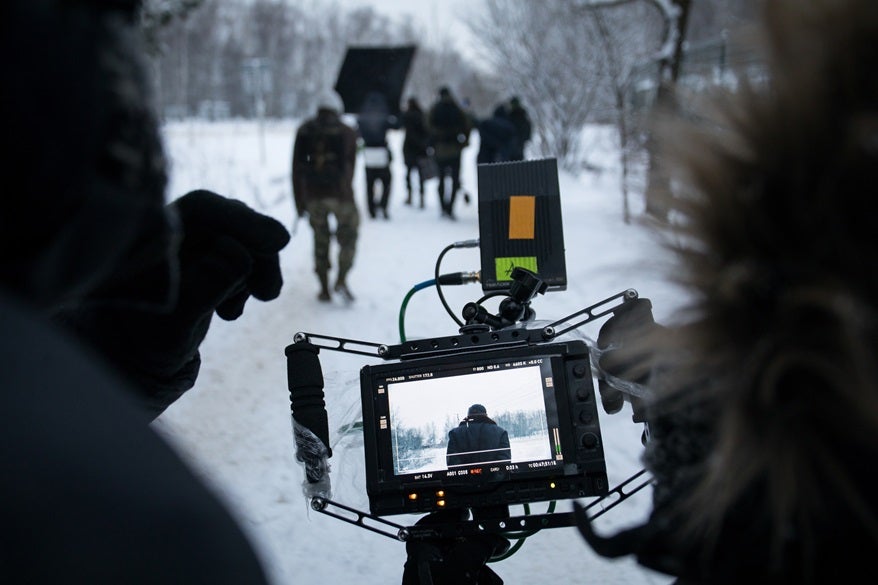
A guide to production insurance
Production insurance – exactly what to look out for when planning your cover
Production insurance is one of the most important considerations during planning, but is riddled with potential pitfalls and obstacles.
In our latest guide, Matthew Whinney of Williamson Carson provides expert insight and advice on how to navigate the world of production insurance.
A guide to production insurance
From poor lighting and continuity errors to actors pulling out because of illness and re-shoot costs, anything can go wrong with film, television and commercial productions.
That’s why most clients buy a holistic production insurance package covering everything in one go, but what exactly is covered and what is not; what is an ad wrap and has the Covid-19 pandemic changed what insurers offer?
My advice on these questions: seek expert help. Those of us working in production insurance know what we’re talking about!
When should you arrange cover?
The earlier you arrange cover, the better. In fact, it’s best to have an annual policy as that provides the best protection and ensures your production is covered from the very outset.
If you don’t go for annual cover, be aware that policies will exclude losses arising from things you knew about in advance or should have known.
That means, if your production falls foul of an air traffic control strike that was announced before you made your travel plans, you won’t be covered for the re-shoot costs caused by the delay.

What do you need to cover?
It’s best to get a holistic production package. This will cover (almost) everything you need:
• Re-shoot insurance – this covers the cost of a re-shoot caused by casting problems beyond your control, loss or damage of production media problems and extra expenses incurred by loss or damage to equipment, props or location.
Usually, your premium will be calculated on your gross estimated annual spend and include a maximum one shoot limit. Non-appearance of models or actors might be excluded as that’s usually covered by the client or advertising agency, but you can get an extension for your shoot if you need it.
• Production equipment insurance – this covers your equipment on set including but not limited to technical equipment owned by your company, hired technical equipment and props, sets and wardrobe. For hired equipment, it’ll cover you for ongoing hire costs up to a maximum of 13 weeks.
• Employer’s and public liability insurance – this is critical and you shouldn’t shoot without it. Public liability covers you for injury or property damage associated with an incident on the production and employer’s liability protects you from costs if one of your employees is injured.

What’s not covered by a holistic package?
There are some elements you might need separate cover for, like cyber, director’s and officer’s liability and travel insurance.
Professional indemnity and errors and omissions might not be covered either, but you’ll need it as it covers you for mistakes or allegations that you’ve made a mistake, like breach of intellectual property and copyright.
Who is responsible for arranging production insurance?
Who arranges insurance cover for a shoot varies from job to job but generally, different players are responsible for the elements of production that fall within their budget and remit.
That means a production company needs to have cover for things like broken equipment or non-appearance of crew. Likewise, brand or advertising agencies will need cover for the elements within their control, like non-appearance of models.
What’s an ad wrap?
In some cases, brand or advertising agencies will take out a broader policy, known as an “ad wrap”, which gives them comprehensive cover for the entire shoot.
It combines cover provided by the advertising agency’s and commercial producer’s policies in one. It’s usually sold to the client, giving them greater control over what is covered and how much it costs.
Policies for advertising agencies typically cover extra expenses incurred as a result of something beyond their control. That includes non-availability of the talent they are contracted to provide due to illness or travel disruption. It will also cover property or products they are contracted to supply, like the ‘hero’ car for a car commercial. It should also provide cover for re-shoot costs if, for some reason beyond their control, an advert is rendered counter-promotional but that usually only applies to non-celebrities.
You can request additions too, like cover for props, sets and wardrobe or cover for film negatives or product media as it’s transported from the production company to the advertising agency for editing.
Who pays?
Who is responsible for what is all laid out in the APA/IPA PIBS Production Insurance Briefing Specification. You should include insurance costs for the shoot in your budget and charge these back to your client. Your insurance protects their investment so it’s common practice to include 1%-2% in your budget to cover these costs.
Where an ad wrap is purchased for a shoot, it’s accepted that production companies can include 0.35% in their budget to cover their costs for maintaining employer’s liability and professional indemnity insurance.
Where will you be covered?
Film, television and commercial productions often require locations around the world, so you need to be confident your production is covered, wherever you are.
Most packages will cover worldwide with the exception of areas facing sanctions or countries where travel is not advised by the Foreign, Commonwealth and Development Office.
Your equipment will be covered in transit and where it’s securely stored and used overseas and you’ll have liability insurance for injury or damage arising whilst shooting, as well as costs incurred if crew are delayed in transit.
If you’re shooting in the USA or Canada, it’s common for clients, locations, advertising agencies and hire companies to request to be listed as either an additional insured or named insured on your public liability insurance. Hire companies might also ask to be listed as a loss payee. As long as you ask in advance of the shoot, at Williamson Carson we can sort that for you.

Has the Covid-19 pandemic changed production insurance?
Broadly speaking, policy wordings haven’t changed dramatically, but non-appearance of talent due to Covid-19, or other communicable diseases, is now excluded.
While insurance for non-appearance does cover illness and injury, it will only cover acute, serious conditions and excludes colds and flu and now Covid-19, as well as pre-existing medical conditions.
What you should look out for
The benefits of a holistic production package are pretty clear but there are still things you need to watch out for when arranging cover.
Different production policies will provide different levels of cover for re-shooting. The broadest policy, commercial producer’s indemnity (CPI), covers re-shoot costs incurred due to anything beyond your control, unless specifically excluded.
It’s possible however, to buy a media production policy which only covers you for non-appearance of crew due to death, accident or sickness. For some production companies, particularly those who only shoot locally, that might be enough, but you need to consider carefully what you need and what your clients expect.
My advice is to communicate with your clients clearly. Some will request a CPI package but others won’t so make sure they are aware of the risks and able to cover them if you only have a media production policy.
Final tip
The most important thing is to be thorough and transparent with your insurers about what you need. Communicate clearly and seek expert help if you need it, because having insufficient or the wrong cover, could spell disaster for your shoot.
With many thanks to Matthew Whinney of Williamson Carson for compiling this guide.

*Sponsored content
All images via Adobe Stock, including top header picture.
Share this Article











